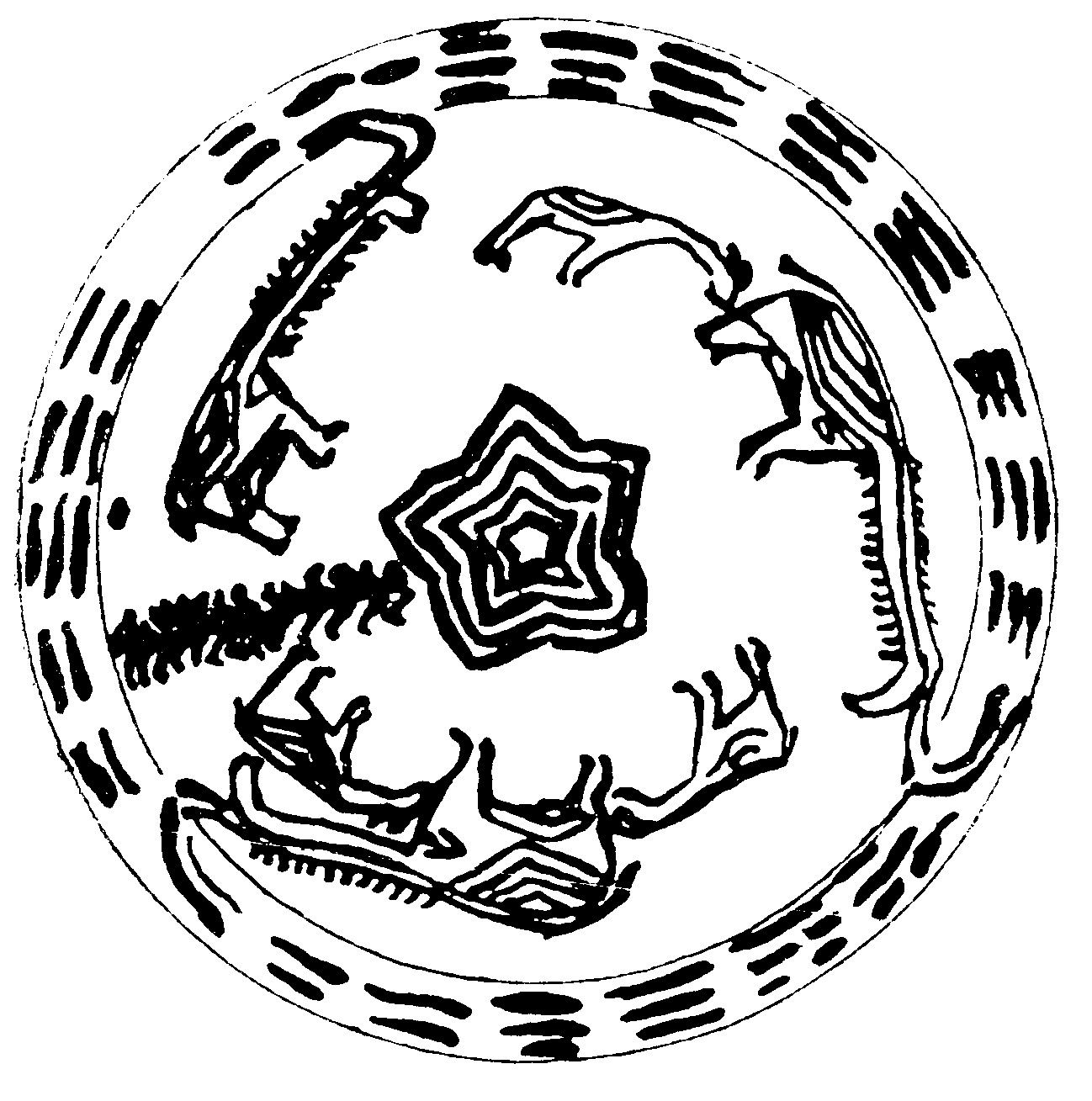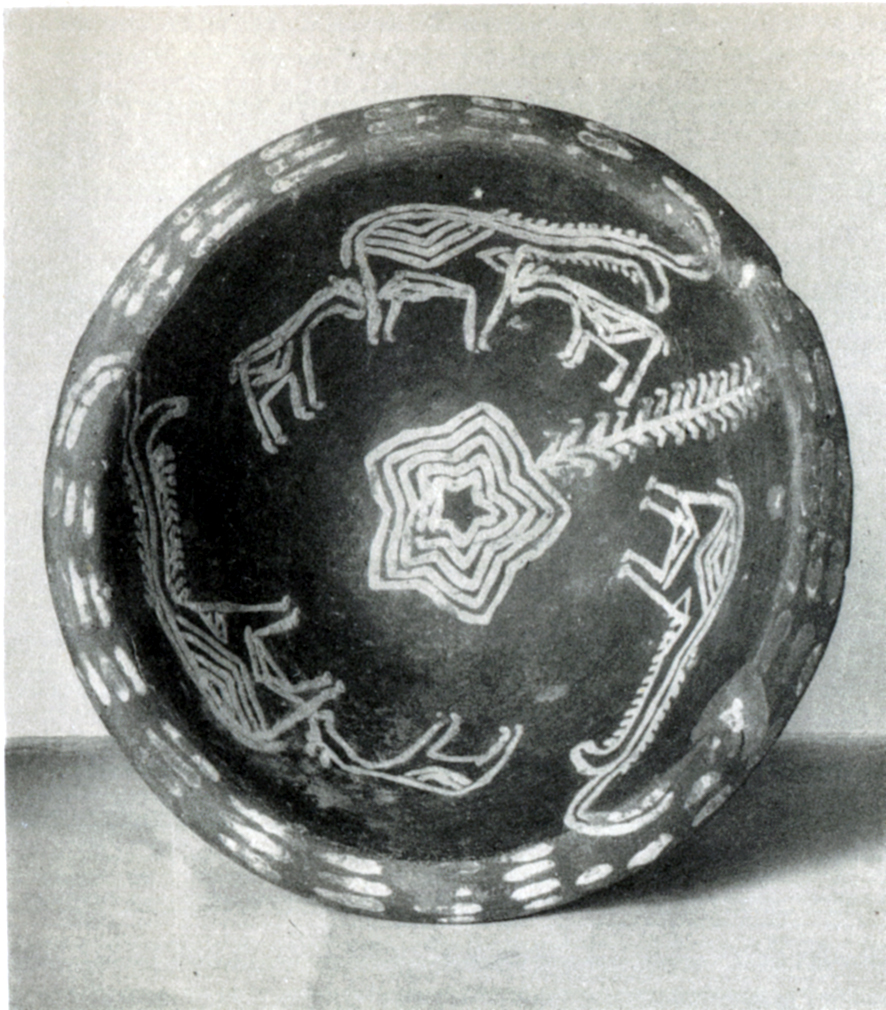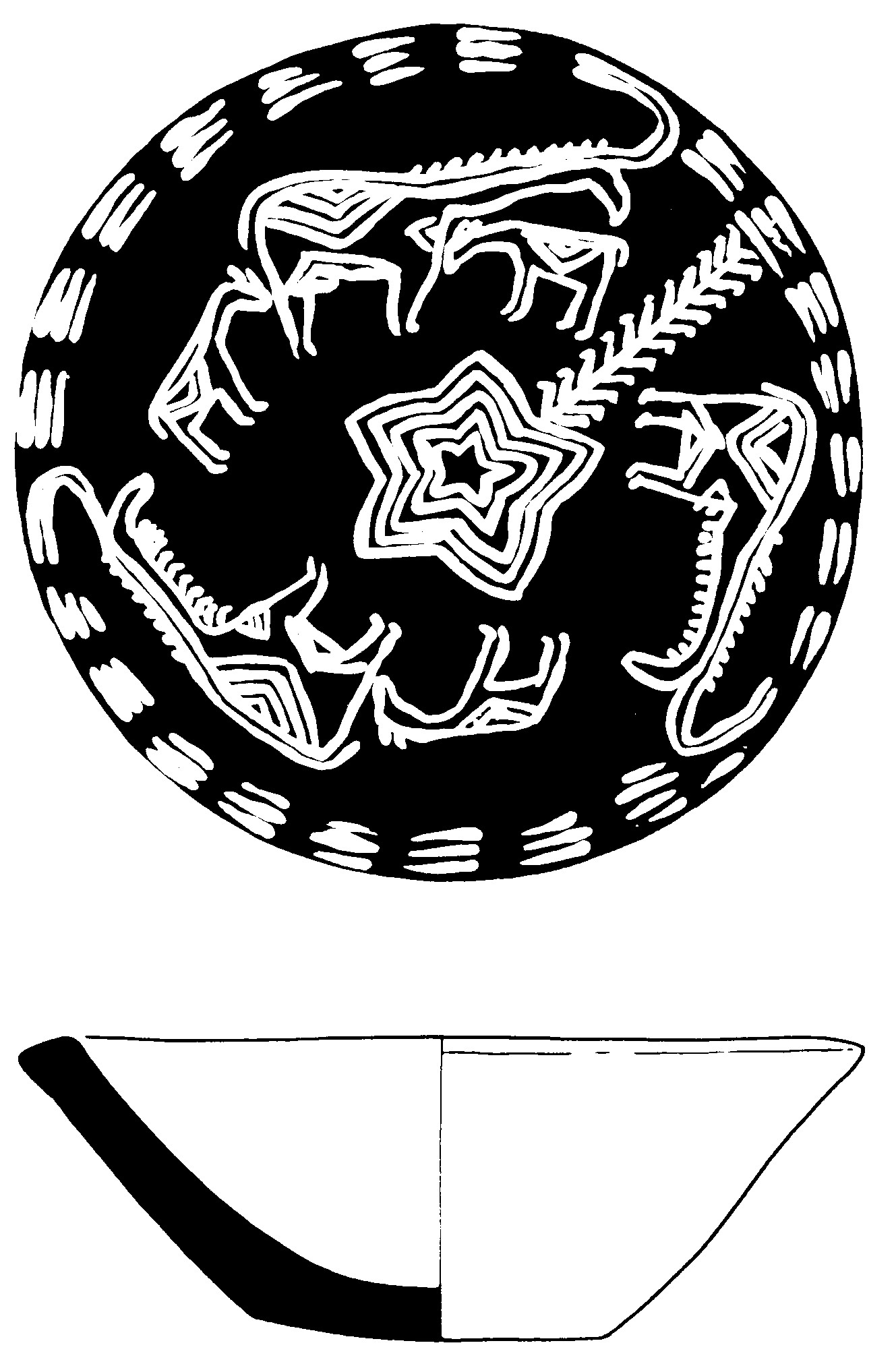C-Ware – shallow bowl C-0178
By Droux, Xavier
Archaeological site unknown.
Howard Carter collection.Oxford, Ashmolean Museum, University of Oxford, AN 1946.297.
Date : Naqada IA–IIB
General range of C-ware production
Material : Nile silt (Painted)
Preservation : Complete
Decoration preservation : Very good
Preservation information :
Small damages to the rim.
Decoration
The flat of the rim is mostly decorated with groups of three to four short, parallel straight strokes.
Most of the decoration consists of a hunting scene. Three large animals follow one another, facing to the left. They each have a long neck with both frontal and neck manes, and a short tail. Their bodies are decorated with triangles filled with chevrons: a large, downturned one hanging from the line of the back, a smaller upturned one on the line of the belly. Two of these animals are associated with smaller ones, which are likely hunting dogs atticking them. One faced by a single dog standing behind it, its head almost connected to its back leg as if biting it. The second one is also followed by a dog in a nearly identical position, while another dog attacks it from the front, almost touching its throat. The tree dogs have short ears pointing backward and short tail, as well as downturned chevrons decorating their belly.
The identification of the larger animals is not easy. They have frontward pointing horns that curve backwards and continue on the flat of the rim, their extremity taking the place of the straight strokes otherwise painted on the rim. These are similar to ibexes horns, but such an identification is most unlikely because of the length of the necks as well as the presence of frontal and neck manes. At first sight, they rather resemble giraffes, but long, backward curving horns seem to preclude this identification. It is possible that these creatures are composite animals, combining different caracteristics from several species, but this interpretation may not be correct either.
The row of animals is interrupted by a vertical plant motif that consists of a single, long stem with short leaves on either side. At the bottom of the vessel is a concentric zigzag design consisting of five parallel lines; the plant rises from the outermost of these zigzags.
Dimensions (cm)
6
15.7
15.7
Additional information
Open
Vi 262
Oi 100
flat base
Inside
References
(ed.).
1922
Catalogue of an exhibition of ancient Egyptian art. London
, xii, 3, cat. 9, pl. XXXIV.1935
Sur deux vases prédynastiques de Khôzam. Annales du Service des Antiquités de l'Egypte 35
, 168-9, fig. 5.1952
Manuel d'archéologie égyptienne I: 1; les époques de formation, la préhistoire. Paris
, 277-8, fig. 181.1961
Chaos en beheersing: documenten uit het aeneolitisch Egypte. Documenta et Monumenta Orientis Antiqui 8. Leiden
, 302, cat. 5, pl. IV.1980
Regional painting style in prehistoric Egypt. Zeitschrift für Ägyptische Sprache und Altertumskunde 107
, fig. 6.1993
Catalogue of the predynastic Egyptian collection in the Ashmolean Museum. Oxford
, 60, cat. 406, fig. 29.1993
L'image et son cadre: réflexions sur la structure du champ figuratif en Égypte prédynastique. Archéo-Nil 3
, 15, fig. 8c.2009
Les peintures sur vases de Nagada I–Nagada II: nouvelle approche sémiologique de l'iconographie prédynastique. Egyptian Prehistory Monographs 6. Leuven
, cat. 67.2012
Some new hunting scenes in predynastic C-wares: London Petrie Museum UC15331 and Oxford Ashmolean Museum 1946.297 'revisited'. Zeitschrift für Ägyptische Sprache und Altertumskunde 139
, pl. XXIX, f.2021
Found in a cellar, but from Naqada? A new predynastic hunting scene on a C-ware fragment from the Garstang Museum of Archaeology, Liverpool, in: Claes, Wouter; De Meyer, Marleen; Eyckerman, Merel; Huyge, Derek † (eds), Remove the pyramid! Studies on the archaeology and history of predynastic and pharaonic Egypt in honour of Stan Hendrickx. Orientalia Lovaniensia Analecta 305. Leuven
, 392, n. 2.





